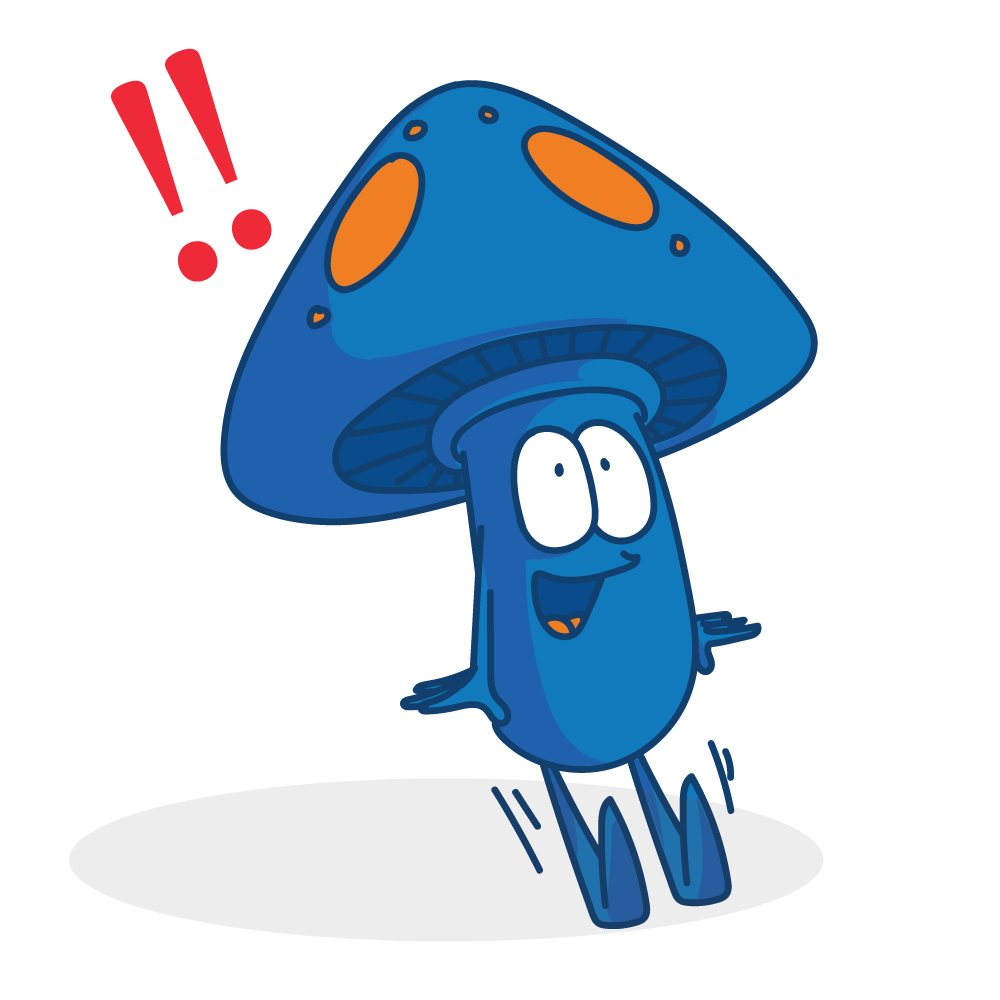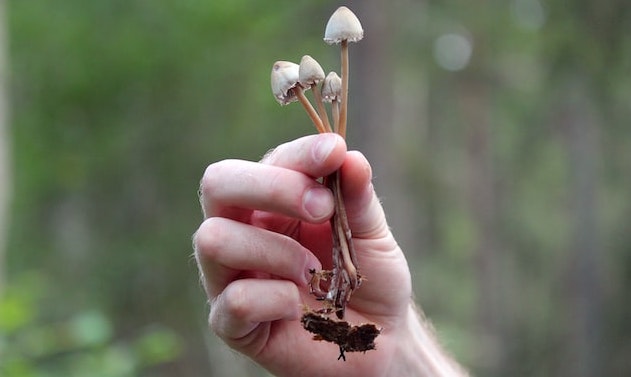The recent paper, published in the journal Mycologia, reports that the two new magic mushroom species discovered in Africa are members of the genus Psilocybe (just like our favorite, the Psilocybe cubensis!) However, the researchers claim that these shrooms differ from any of their closest Psilocybe relatives already known to science.
Psilocybe, The Royal Family of Psychedelic Mushrooms
The Psilocybe mushroom genus contains around 140 known species. This number includes some of the most well known and studied psychedelic, or magic, mushrooms. Many members of this species produce the compound psilocybin — AKA — the delightful mechanism that causes psychedelic trips when consumed by humans (and some animals!)

Psilocybin mushrooms grow in a wide range of climates around the world — including bedroom cupboards — and sprout on a variety of substrates such as wood, soil, and manure. Despite this global versatility, only a few of the known species are indigenous to Africa. After this latest discovery, the grand total is now six.
Two Brand New Mushroom Species
Mycologist and study author with the Department of Microbiology at Stellenbosch University, South Africa, Breyten van der Merwe told Newsweek;
“Although it is not rare to find new African mushrooms, it is relatively rare to find new Psilocybe mushrooms, as these are always of interest to amateur and trained mycologists,”
The two new species discovered have been named Psilocybe ingeli and Psilocybe maluti.
Psilocybe ingeli was first found in 2023, growing in grassy pasture land enriched with bovine manure in the KwaZulu-Natal province of South Africa by Talan Moult, a self-taught mycologist, also one of the study’s authors.
The mushroom was intriguing due to its idiosyncratic appearance, with the authors noting;
“The diminutive size and hemispheric cap of the mushroom did not match the description of any known South African mushroom,”
Dung-Loving Mushrooms
The other mushroom, Psilocybe maluti, was first documented in South Africa’s Free State province in 2021 by Daniella Mulder who happened to see the mushroom growing on some bovine dung. She sent the photos on to Andrew Killian, another South African citizen mycologist, for identification.

This mushroom had an unusual cap, and could not be identified as any Psilocybe previously recorded by scientists. Van de Merwe told Newsweek;
“P. maluti has a unique cap—it’s elongated and pointy and never opens up fully like most mushrooms,”
Both Psilocybe maluti and Psilocybe ingeli were sent to van der Merwe, who carried out a genetic analysis. These investigations helped to confirm that these two mushrooms were indeed new species.
These Two New Species Are Just The Beginning
It is highly likely that there are many more Psilocybe species to find in southern Africa, with the authors writing that there is “undeniably” more to be documented. They also emphasize the importance of the work that citizen scientists do searching for new specimens, and encouraged more people to take up the hobby.
In a press release van der Merwe spoke glowingly of these ordinary folk with a scent for shrooms;
“These two species were sent to me by citizen scientists. It would be impossible for a single researcher to cover a fraction of an area these mushroom enthusiasts have access to. This is the only way we will be able to further studies in African mycology,”

New Interest in Cultural Magic Mushroom Use in Africa
Magic mushroom use has been well documented in regions such as Central and South America. However there are few reports of ceremonial magic mushroom usage in Africa.The uncovering of new species of psychedelic mushroom has understandably led to renewed interest in how they may have been used by local populations, both past and present.
After the first specimen of the Psilocybe maluti was discovered, further searches found more of the same mushroom in the Kingdom of Lesotho, a high altitude country that is landlocked by South Africa. This led to the documentation of the psychedelic mushrooms’ spiritual usage by traditional healers from the Bathoso ethnic group.
Collecting Stories From Elders and Healers
The researchers reached out to Basotho healers and elders near the villages of Laoti and Lejone for anecdotal information and stories about the traditional use of Psilocybe maluti. Further knowledge and firsthand experiences were provided by a traditional Basotho healer.
The researchers learned that the indigenous name for Psilocybe maluti is “koae-ea-lekhoaba.” This two part name translates into “powdered tobacco” (koae), a reference to its spore mass, which is reminiscent of tobacco in color and texture, and “crow” or “crow-like bird” (lekhoaba) due to the fact the pied crow and other similar birds like to peck at, and consume this mushroom.
The Psilocybe maluti causes a trance-like state and is consumed through a wide range of methods, depending on the case. One recipe that garnered particular interest from the researchers was a psychedelic brew consisting of large quantities of Psilocybe maluti and infusing the mushrooms in warm water, alongside Boophone disticha, a highly hallucinogenic plant.

The brewed drink is consumed by a person who wishes to heal. They are then placed before a mirror, and encouraged to describe their visions or hallucinations to the healer, who interprets these as answers and potential solutions to the individual’s spiritual needs.
Psilocybin Mushrooms are Ancient Tools of Healing
Van der Merwe said;
“This appears to be the only recorded firsthand report of hallucinogenic mushrooms being used traditionally in Africa and the first mention of hallucinogenic mushroom use in Sub-Saharan Africa. The knowledge shared and discussed in this study has been passed down through generations by word of mouth.”
The more we learn and discover about magic mushrooms, the deeper and more beautiful a history we find. There are many cultures that for millennia have been using the fruits of the earth to heal themselves spiritually. Ancient knowledge is coming to the forefront as people look for new ways to live in this world, and magic mushrooms are a key part of this story.





